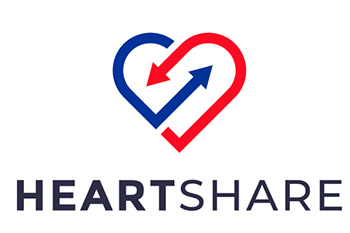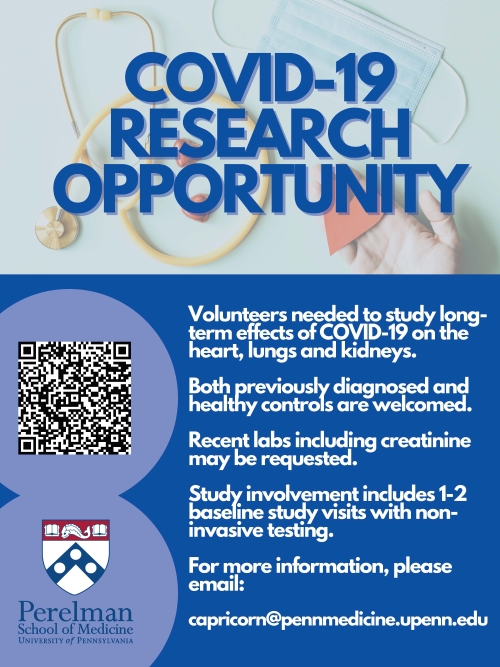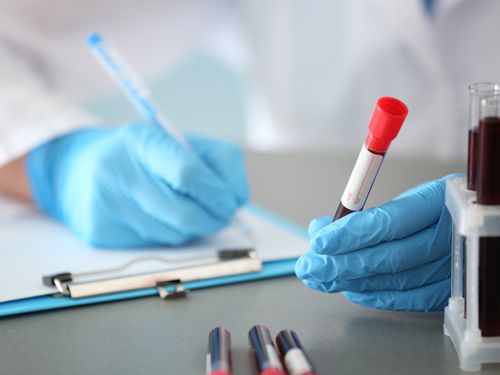Our Current & Past Initiatives
Since our lab's beginning, we have been dedicated to conducting our own studies and trials while fostering collaborative efforts. We are currently recruiting and enrolling participants for several studies across diverse populations.
Below is an overview of our ongoing research, along with highlights from past studies we've completed.
Active Studies

The overall goal of the HeartShare Deep Phenotyping Study is to create a rich repository of data (e.g., demographic, social determinants of health, clinical, physiological, laboratory), images, and multi-omics (blood and tissue samples) that will serve as a resource for investigators to identify novel HFpEF subtypes and mechanisms (biological and pathophysiological) to inform future strategies for enhanced diagnosis and treatment of HFpEF.
We are one of six clinical centers conducting the HeartShare Deep Phenotyping Study, which is composed of two prospective, multicenter, longitudinal components: (1) the HeartShare Registry and (2) the HeartShare Deep Phenotyping Cohort study involving up to 10,000 and 2,000 participants. Our site is also home to the Arterial Stiffness Core Laboratory, serving to provide quality and oversight over arterial waveform measures collected by participating clinical centers.
Interested in learning more?
Learn more about HeartShare at Penn

In this study, the Investigators at the University of Pennsylvania will assess organ-specific biomarker profiles (proteins and metabolites), in order to better understand biologic processes, the interplay between the heart and extracardiac organs, and their role in human disease, with an emphasis on cardiovascular disease. The study will specifically focus on the role of the liver, kidneys, lungs, and skeletal muscle, and their interactions with the heart as determinants of cardiovascular disease. This will be achieved by drawing biological specimens from key organs among patients who have received a COVID-19 diagnosis. Study participants will undergo a series of non-invasive procedures during their visit to better understand the role and function of these systems post-COVID infection.
Interested in learning more?
Learn more about CAPRICORN-19

The OSCAR study will assess organ-specific biomarker profiles, in order to better understand biologic processes, the interplay between the heart and extracardiac organs, and their role in human disease, with an emphasis on cardiovascular disease. This will be achieved through sample collection for omics studies complemented by in-depth chart reviews among hospitalized patients.
We are conducting multidisciplinary research in the UK Biobank and Penn Medicine Biobank to investigate the patterns, distribution, genetic architecture, and prognostic significance of three-dimensional aortic geometric phenotypes (AGPs). Using a fully automated deep learning-based segmentation approach, we have computed over 30 unique AGPs. This approach has been deployed to perform deep phenotyping on more than 55,000 cardiovascular magnetic resonance images from the UK Biobank and over 9,000 computed tomography scans from the Penn Medicine Biobank.
Large artery stiffness (LAS) is a key predictor of cardiovascular disease, cognitive decline, renal dysfunction, cardiometabolic abnormalities, and cardiovascular mortality. The carotid-femoral pulse wave velocity (cf-PWV) is the non-invasive gold standard for measuring LAS, but alternative metrics such as the cardio-ankle vascular index (CAVI) may offer some advantages. CAVI incorporates a mathematical correction for blood pressure and is measured using brachial and ankle oscillometric cuffs and a phonocardiogram. Importantly, CAVI is based on pulse wave velocity in a path from the heart to the ankles, including both large and peripheral muscular arterial segments. Despite its widespread use in Asia, CAVI has not been adopted in Europe and the US, and existing studies often lack comprehensive data, highlighting the need for more research among non-Asian populations. Recent meta-analyses indicate a link between CAVI and cardiovascular risk, but emphasize the need for further investigation, particularly in the primary prevention context. To address these gaps, we have established a global consortium of studies that have incorporated the VaSera device for measuring CAVI. This collaborative effort aims to enhance our understanding of CAVI and its associated parameters, ultimately improving cardiovascular risk stratification.
The Global Heart Failure Consortium (GHFC) is a collaboration established in 2019 by the Perelman School of Medicine at Penn and Bristol Myers Squibb. It brings together medical centers worldwide along with industry partners to promote research and enhance the scientific understanding of heart failure, including HFpEF (heart failure with preserved ejection fraction).
We collaborate closely with our colleagues Ernst Rietzschel, Patrick Segers, Thierry Gillebert, Marc De Buyzere and others at the University of Ghent. Dr. Rietzschel and his collaborators are performing the Asklepios study, which is a large cohort study of cardiovascular disease and aging in middle-age. We have collaborated with the U. Ghent team in various substudies of ventricular and arterial function.
Collaborative RCTs in HFpEF
PI: Dr. Senthil Selvaraj, Dr. Payman Zamani, Dr. Kenneth Margulies
Arterial function Core Lab Director: Dr. Julio Chirinos
In individuals with heart failure with preserved ejection fraction (HFpEF), skeletal muscles often show reduced energy production, leading to limited exercise capacity. Emerging research suggests that ketone esters (KE) may offer advantages over other fuel sources by enhancing energy efficiency. To explore this potential, we conducted a study to evaluate whether KE supplementation could improve exercise tolerance in HFpEF patients, while also investigating how it impacts energy and fuel metabolism during physical activity.
The KETO-HFpEF trial was a randomized, double-blind, placebo-controlled crossover study involving 20 HFpEF patients. In this trial, participants were given either KE or a placebo before engaging in constant-intensity exercise tests at 75% of their peak workload, continuing until exhaustion. Throughout the exercise, we analyzed expired gases to assess energy utilization, while mixed models were used to evaluate the effects of KE on plasma metabolites at different points during the exercise.
PI: Dr. Payman Zamani
Arterial function Core Lab Director: Dr. Julio Chirinos
This study will test whether Empagliflozin (Empa), with and without Potassium Nitrate (KNO3), improves submaximal exercise endurance and skeletal muscle oxidative phosphorylation capacity (SkM OxPhos) in participants with Heart Failure with Preserved Ejection Fraction (HFpEF).
Objective: Compare the impact on submaximal exercise endurance of Empa, with and without KNO3, as compared to active control (Potassium Chloride, KCl).
PI: Dr. Payman Zamani
Arterial function Core Lab Director: Dr. Julio Chirinos
The research study is being conducted to test whether a dietary supplement called Potassium Nitrate (KNO3), with and without 2 other supplements called Propionyl-LCarnitine (PLC) and Nicotinamide Riboside (NR), improves exercise in participants with Heart Failure with Preserved Ejection Fraction (HFpEF).
Objective: Compare the impact on submaximal exercise endurance of pharmacologic therapy aimed primarily at increasing intramuscular perfusion (KNO3) versus combination therapy to increase intramuscular perfusion and mitochondrial reserve (KNO3 + NR + PLC).
PI: Dr. Jordana Cohen
Arterial function Core Lab Director: Dr. Julio Chirinos
BLOCK HFpEF trial is a research trial that is evaluating if different types of commonly used blood pressure medications (amlodipine and metoprolol) have different effects on blood pressure, exercise capacity, quality of life, and heart function in individuals with heart failure with preserved ejection fraction (HFpEF). There are three study visits, including physical exams, blood draws, questionnaires, echocardiograms, arterial tonometry, and exercise testing. The study occurs in two phases, with each study visited occurring approximately five weeks apart and a one week washout period occurring in between. The participants perform self-blood pressure monitoring at home with a specific device provided by the study team.
Prior Work
Effect of KNO3 Compared to KCl on Oxygen UpTake in Heart Failure with Preserved Ejection Fraction
The goal of this randomized double-blinded cross-over trial is to test the hypothesis that potassium nitrate will improve exercise capacity, quality of life, and key physiologic adaptations to exercise in patients with heart failure and preserved ejection fraction (HFpEF). Key endpoints in the trial include aerobic capacity, quality of life, vasodilatory reserve, the vasodilatory reserve in exercising muscle, LV systolic and diastolic function, muscle oxidative capacity and late systolic left ventricular afterload, which induces LV diastolic dysfunction and remodeling.
PI: Julio A. Chirinos
R01 HL121510
Funded by a grant from the National Institutes of Health
The REPLACE COVID trial investigated whether continuing or discontinuing renin-angiotensin system (RAS) inhibitors, such as ACE inhibitors and angiotensin receptor blockers, would influence outcomes in patients hospitalized with COVID-19. RAS inhibitors are commonly prescribed for conditions like high blood pressure and heart disease, but their role in COVID-19 severity has been a topic of debate.
Conducted across 20 major hospitals in seven countries, the trial included adult patients who were already taking RAS inhibitors before being admitted with COVID-19. The goal was to determine whether stopping or continuing these medications would affect key outcomes, such as survival, duration of mechanical ventilation, kidney function, and overall organ health during hospitalization.
Patients were randomly assigned to either continue or discontinue their RAS inhibitor therapy. The study ranked outcomes based on factors like time to death, need for life-support therapies, and the extent of organ dysfunction.
The REPLACE COVID trial provides valuable insights into whether common blood pressure medications should be adjusted during severe COVID-19 infections. It is registered with ClinicalTrials.gov (NCT04338009).
This international multi-site trial explored whether fenofibrate, a drug that activates peroxisome proliferator-activated receptor alpha and inhibits SARS-CoV-2 replication in lab settings, could be effective in treating COVID-19 in humans. In a randomized, double-blind trial, 701 COVID-19 patients (both inpatients and outpatients) were assigned to receive either 145 mg of oral fenofibrate or a placebo for 10 days. Participants were enrolled from October 2, 2020 to February 27, 2022. The main goal was to evaluate a severity score based on factors like time to death, mechanical ventilation use, oxygenation, hospitalization, and symptom severity.
Participants in both groups had similar characteristics, including a mean age of 49, with 47% female participants, and 15% of the group having diabetes. However, the results showed no significant difference between the fenofibrate and placebo groups in terms of the primary endpoint or other key outcomes, including all-cause death. Fenofibrate did not improve clinical outcomes related to COVID-19. There were slightly fewer adverse events in the fenofibrate group, but gastrointestinal side effects were somewhat more common. Overall, the trial concluded that fenofibrate did not have a significant impact on COVID-19 outcomes (NCT04517396).
Effect of CPAP, Weight Loss, or CPAP Plus Weight Loss on Central Hemodynamics and Arterial Stiffness
Obesity and obstructive sleep apnea (OSA) often occur together, but their effects on central aortic pressure and large artery stiffness are not well understood. In this randomized controlled trial, 139 adults with obesity (BMI >30 kg/m²) and moderate-to-severe OSA were randomly assigned to one of three 24-week treatments: continuous positive airway pressure (CPAP) therapy, weight loss (WL) therapy, or a combination of both CPAP and WL. The goal was to assess how these interventions impacted central pressures and carotid-femoral pulse wave velocity, which is a measure of large artery stiffness.
In this study, we are investigating a novel hemodynamic sensor to assess arterial hemodynamics in an ambulatory fashion in patients with a recent episode of decompensated heart failure.
PI: Julio A. Chirinos
Sponsor and Collaborator Institution: Microsoft Research
A Longitudinal Evaluation of Disease & Fibrosis Biomarkers in Different Groups of Heart Failure Patients to Enhance the Early Clinical Development of Compounds with Anti-fibrotic Activity in the Heart
This multicenter study aims to characterize cardiac structure and function (in particular, myocardial interstitial fibrosis) in patients with hypertension, heart failure with preserved ejection fraction and heart failure with reduced ejection fraction. Our core lab quantifies all MRI and arterial hemodynamic data for this study.
Arterial function Core Lab Director: Julio A. Chirinos
Funded by Bristol-Myers-Squibb
Heart Failure, Left Ventricular Remodeling, and Circulating Nitric Oxide Metabolites
Co-PIs: Julio A. Chirinos, Scott R. Akers
Arterial function Core Lab Director: Julio A. Chirinos
Targeting Central Pulsatile Hemodynamics in Chronic Kidney Disease
R56 HL 124073-01A1
Funded by a grant from the National Institutes of Health
Penn Iceland Sleep Apnea Study
In this study, we are assessing the effects of sleep apnea on cardiovascular structure and function, assessed with a combination of arterial tonometry and cardiac MRI. The study occurs at the University of Pennsylvania and the University of Iceland.
Program Project PI: Allan Pack; Project Leader: Samuel T. Kuna
Arterial function Core Lab Director: Julio A. Chirinos
We served as an Arterial Stiffness Core Lab for the MESA Mind Ancillary Study.
Arterial function Core Lab Director: Julio A. Chirinos
We performed a study at the CMJC VA Medical Center in which various novel MRI cardiovascular phenotypes are being assess in patients with hypertension, heart failure with preserved ejection fraction and heart failure with reduced ejection fraction. Our core lab quantifies all MRI and arterial hemodynamic data for this study.
PI and Arterial function Core Lab Director: Julio A. Chirinos
CMJCVAMC
Arterial function Core Lab Director: Julio A. Chirinos
Due to the limited availability of CVD-related morbidity and mortality population-based data from Latin America were limited, the PREVENCION study (Estudio Peruano de Prevalencia de Enfermedades Cardiovasculares) was launched. PREVENCION was a population-based study conducted on a representative sample of the non-institutionalized civilian population in Peru’s second-largest city. This population was comparable to the broader urban population in Peru and similar to other Latin American populations in countries like Bolivia and Ecuador. The study aimed to contribute valuable insights into understanding and preventing CVD across Latin America.
This randomized trial is assessing the effect of high altitude on the hemodynamic response to various antihypertensive regiments. We collaborate with Dr. Josefina Medina at the Santa Maria Catholic University in Peru, and we have performed core lab analyses of arterial function for the INTERVENCION trial.
We collaborated with Drs. Edwards and Farquhar at the U. of Delaware in this study assessing the deleterious effects of dietary salt. We provided support for the analysis of central arterial hemodynamic data collected.
1R01HL104106 (PI: Edwards, Farquhar)

